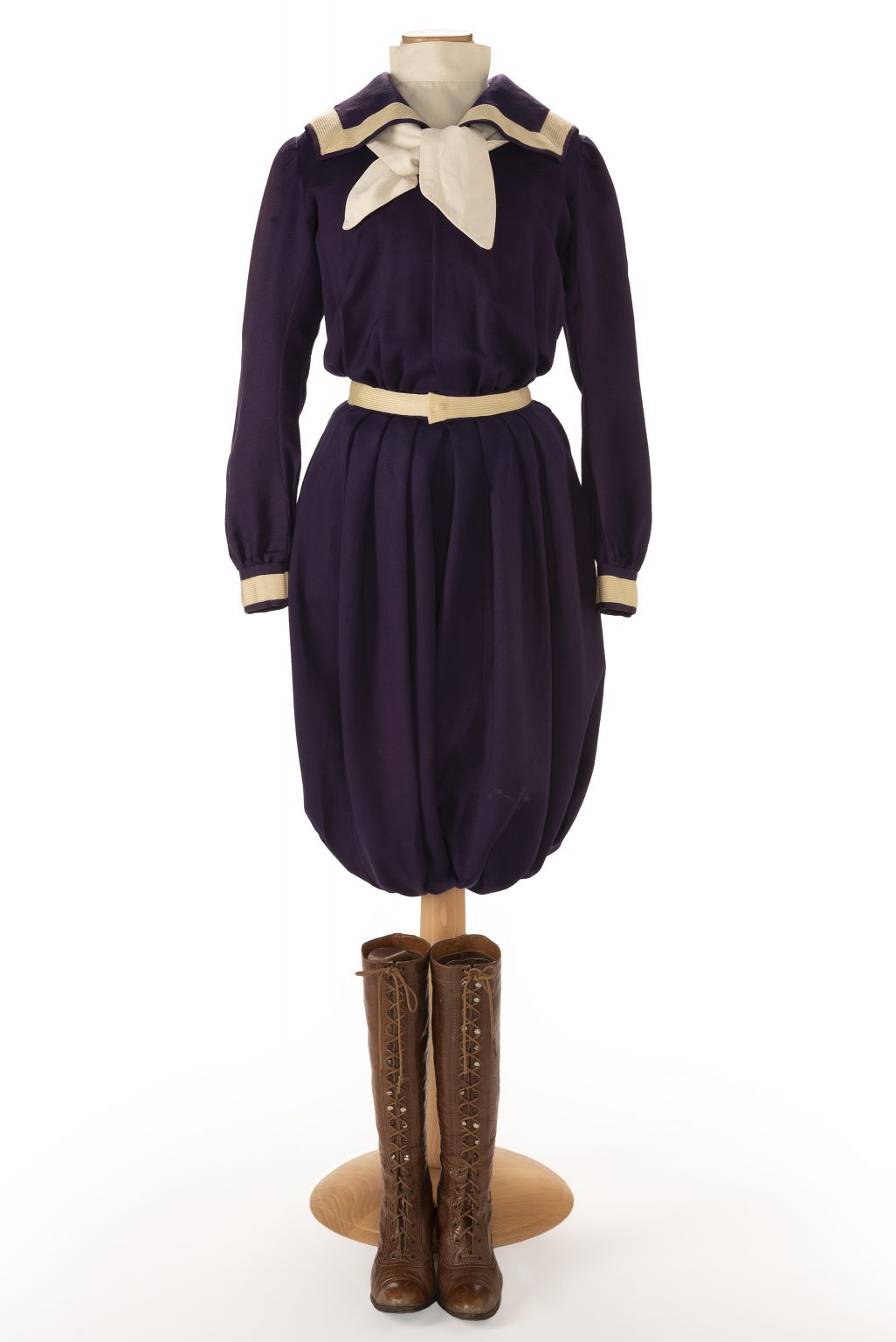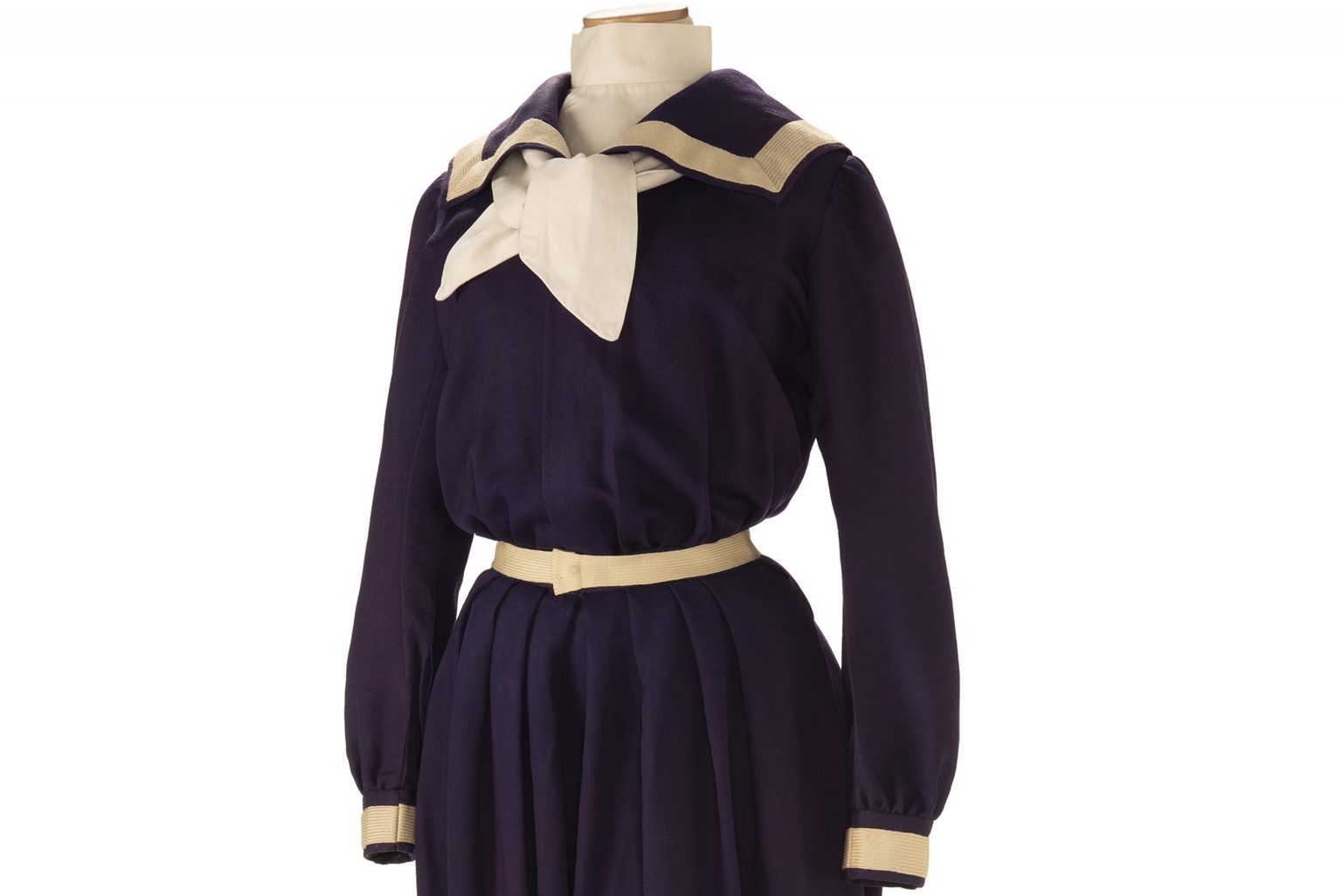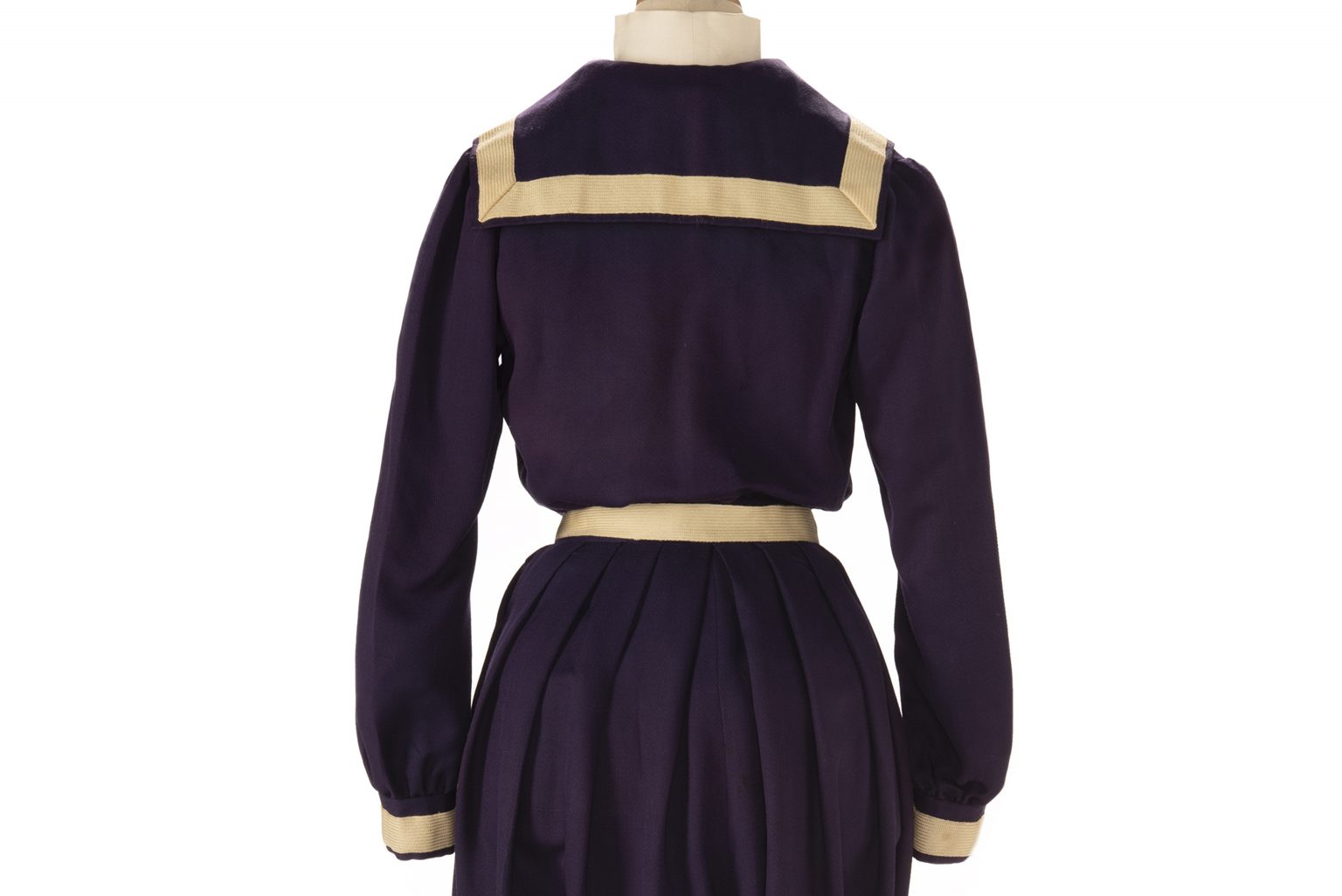
Bicycle outfit
Two-piece bicycle outfit in wool consisting of a long-sleeved jacket and a pair of bloomers, late 19th century early 20th century, Camilla Colombo Collection.
Shiny leather bicycle boots, early 20th century, Camilla Colombo Collection.
Details


Historical context
Women and bicycles
Women have been cycling since the end of the 19th century. Annie Londonderry was the first woman to cycle around the world in 1895. Lina Cavalieri, an actress and singer, took part in bicycle races as early as 1893.
The bicycle quickly became a symbol of progress, freedom and fun. However, cycling remained a privilege for few and was frowned upon for women. Cycling was considered scandalous as it was impossible for women to keep their legs still and together, their skin darkened under the sun, and they wore masculine caps on their heads. Cycling, it was said, can cause sterility and nervous disorders. Then there was the problem of clothing. Long skirts were ill-suited to cycling, and fashion was quick to come up with more functional alternatives, from trouser skirts, to slightly shorter skirts, to full-fledged trousers, loose and puffy, worn with high lace-up boots and blouses or sports jackets. These suits caused immediate controversy over a woman’s right to wear a male garment such as trousers, but they gave women a new freedom of movement, and reflected the demand by women to have control over their own bodies. In 1924, cyclist Alfonsina Strada was the first woman to register for the Giro d’Italia. Her participation was fraught with controversy and prejudice: the Gazzetta dello Sport wrote about her but the Resto del Carlino transformed her into Alfonsino Strada. She did not win, but she showed other women that they too could race with men, even though they still had to ask for the consent of their husbands or boyfriends to train and compete.